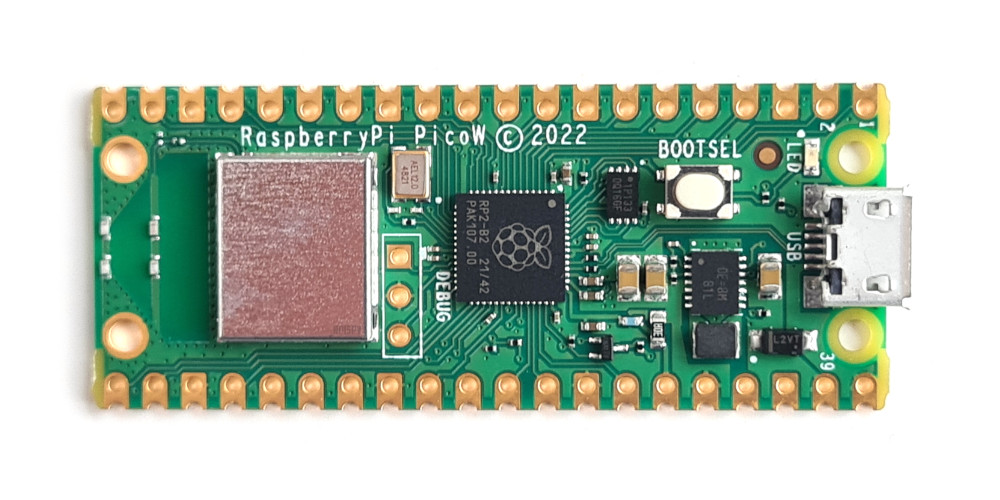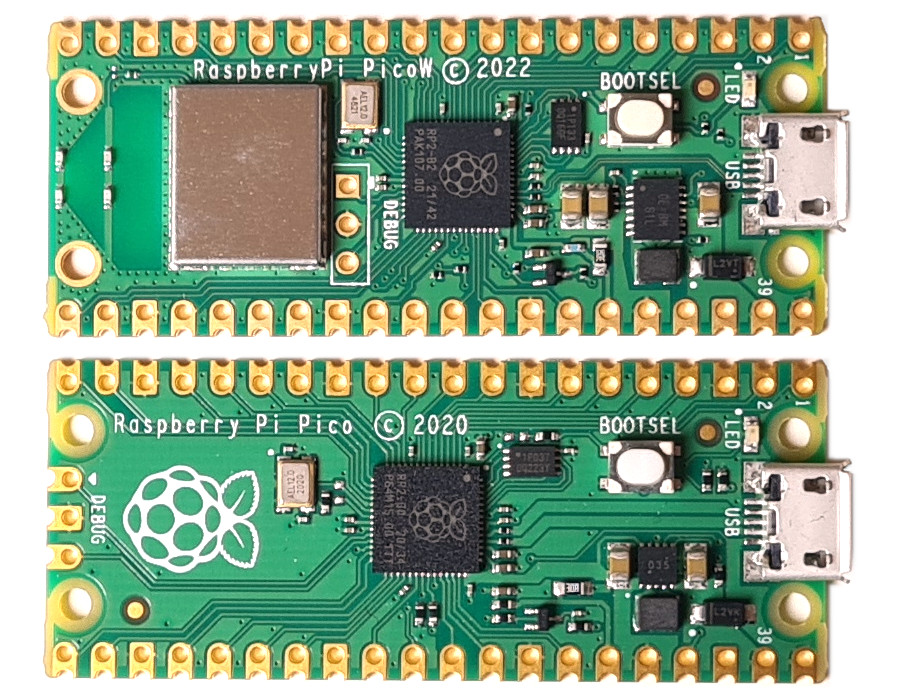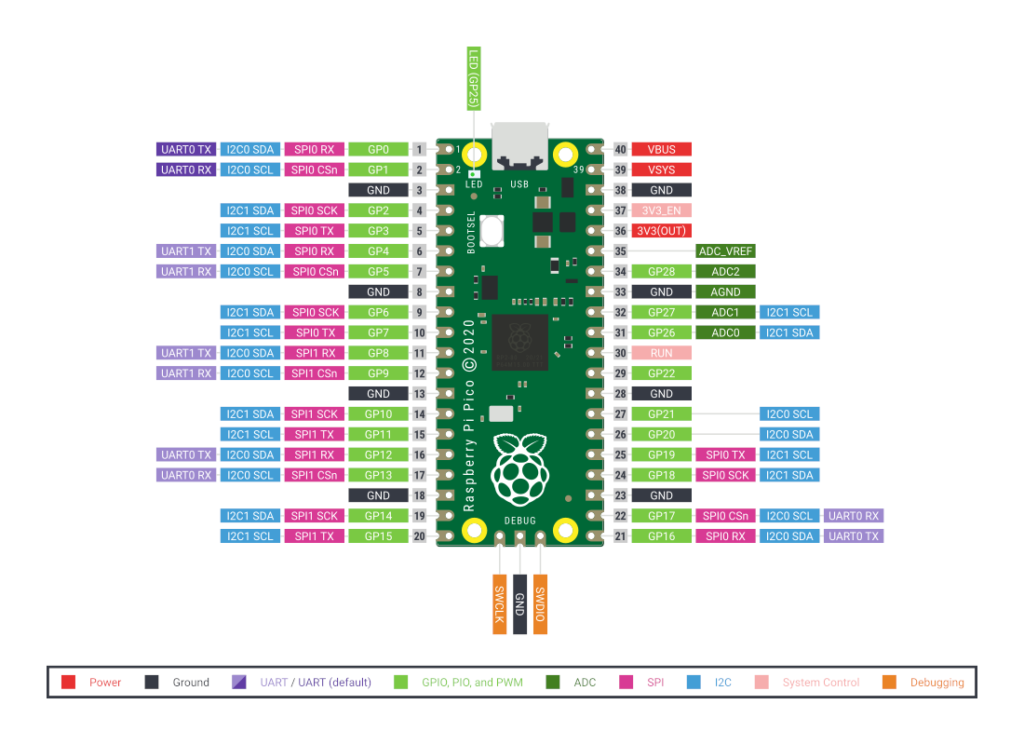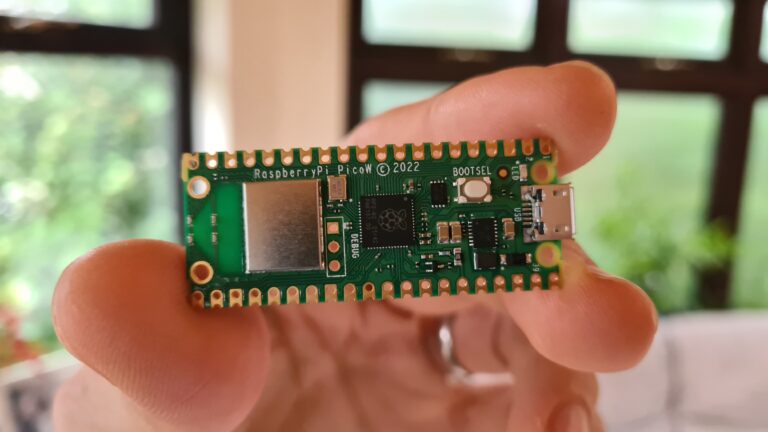Today Raspberry Pi have announced the Pi Pico W, Pico H and Pi Pico WH. These compliment the original Pi Pico. You can buy a Pi Pico W and Pi Pico H immediately with the Pi Pico WH being made available in August.
The Pi Pico W adds WiFi and Bluetooth Low-energy. The H variant adds a 3-pin debug connector and pre-soldered headers. The Pi Pico WH adds WiFi, Bluetooth LE, 3-pin debug socket as well as the pre-soldered headers.

Pi Pico W Specification:
- RP2040 microcontroller chip designed by Raspberry Pi in the United Kingdom
- Dual-core Arm Cortex M0+ processor, flexible clock running up to 133 MHz
- 264kB of SRAM, and 2MB of on-board Flash memory
- USB 1.1 with device and host support
- Low-power sleep and dormant modes
- Drag-and-drop programming using mass storage over USB
- 26 × multi-function GPIO pins
- 2 × SPI, 2 × I2C, 2 × UART, 3 × 12-bit ADC, 16 × controllable PWM channels
- Accurate clock and timer on-chip
- Temperature sensor
- Accelerated floating-point libraries on-chip
- 8 × Programmable I/O (PIO) state machines for custom peripheral support
- Wireless (802.11n), Single-band (2.4 GHz)
- Bluetooth 5.2 (support coming soon)
- WPA3
- Soft Access Point supporting up to 4 clients
- Dimensions : 21mm(W) x 51.3mm(L) x 3.9mm(H)
Although the Pi Pico’s new CYW43439 chip supports IEEE 802.11 b/g/n wireless LAN and Bluetooth 5.2 only wireless LAN is supported at launch. It is expected that Bluetooth support will be added soon.
As with the original Pi Pico software development will be supported via MicroPython and C/C++. MicroPython will be updated first with support for C/C++ following afterwards.
Pinout & Power Pins
The pinout of the new devices is identical to the original Pico so you should be able to swap out older Picos for their new siblings.

Here is the pinout:

The new addition to the Pi Pico family is clearly aimed at the world of IoT devices and responds to demand in that that domain for small, cheap, network enabled devices.
Here is the Pi Pico W datasheet.
The rest of the Official Pi Pico W documentation can be found on the Raspberry Pi site.

